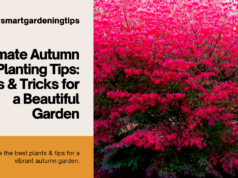
Welcome to the world of fall gardening! As the leaves start to change and the temperatures cool down, it’s the perfect time to boost your garden’s growth and prepare for a successful spring. With expert tips and techniques, you’ll learn how to make the most of this season and enjoy a thriving garden year-round.
Key Takeaways:
- Prepare your garden for spring by following these fall gardening tips.
- Boost your garden’s growth with expert techniques and advice.
- Choose the right plants and tools for a successful fall garden.
- Maintain a healthy garden by preventing pests and ensuring proper care.
- Harvest and store your fall garden produce to enjoy throughout the season.
Benefits of fall gardening
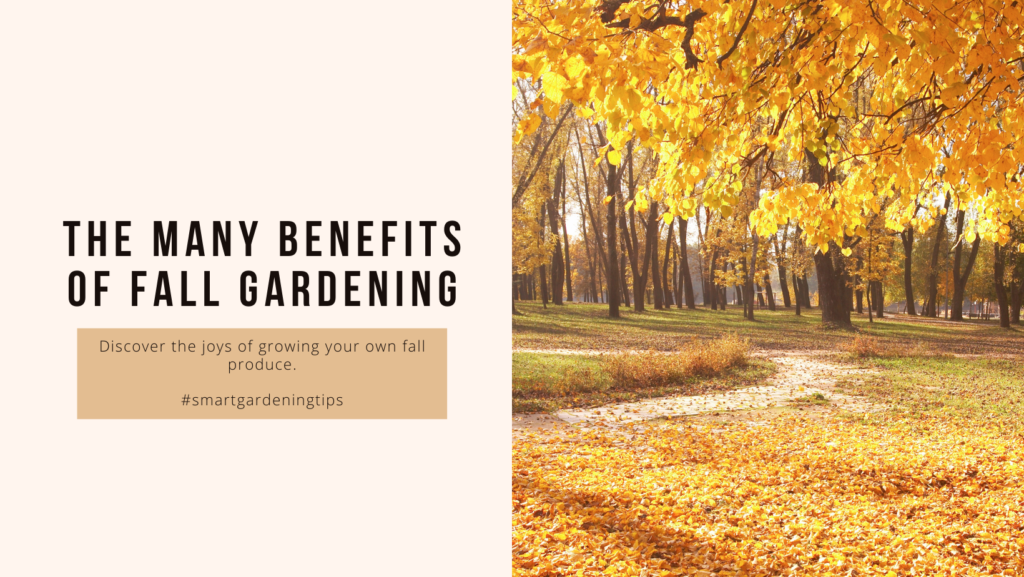
When it comes to gardening, fall is a season full of hidden advantages. Not only does it provide a beautiful backdrop of vibrant colors and crisp temperatures, but fall gardening also offers numerous benefits for your plants and the overall health of your garden. In this section, we will explore the many advantages that fall gardening brings, including increased plant growth, improved productivity, and preparation for a successful spring garden.
Increased Plant Growth
Fall gardening sets the stage for increased plant growth by taking advantage of the ideal growing conditions that come with cooler weather. As the heat subsides and the soil retains its warmth, plants can focus their energy on root development, strengthening their foundation for the upcoming seasons. This not only results in healthier, hardier plants but also enables them to absorb essential nutrients and water more efficiently, leading to stronger growth and vibrant foliage.
Enhanced Productivity in Fall
The fall season offers a unique opportunity to maximize your garden’s productivity. Cool-season crops, such as leafy greens, root vegetables, and cruciferous vegetables, thrive in lower temperatures, producing bountiful harvests. By planting these crops in late summer or early fall, you can enjoy a continuous supply of fresh, homegrown produce well into the cooler months. Additionally, fall gardening allows you to extend the growing season and make the most of your garden space, providing a wider variety of crops throughout the year.
Preparation for a Successful Spring Garden
A well-maintained fall garden serves as the foundation for a successful spring garden. By investing time and effort into fall gardening tasks, such as soil preparation, weed control, and proper plant care, you are setting yourself up for a vibrant and thriving garden come spring. Fall is the perfect time to amend the soil with organic matter, ensuring it is rich in nutrients and well-drained, providing an optimal environment for future plant growth. Additionally, by removing weeds and diseased plants in the fall, you reduce the risk of pests and diseases overwintering and impacting your garden in the spring.
“Fall gardening offers the opportunity to prepare your garden for the upcoming seasons while enjoying the beauty and productivity it brings.”
By taking advantage of fall gardening benefits, you can enhance your garden’s growth, productivity, and overall health. Make the most of this season by implementing these expert tips and techniques, promoting increased plant growth, ensuring a bountiful harvest, and setting the stage for a successful spring garden.
| Benefits of Fall Gardening | Key Points |
|---|---|
| Increased Plant Growth | Boosts root development and nutrient absorption |
| Enhanced Productivity in Fall | Maximizes yield of cool-season crops |
| Preparation for a Successful Spring Garden | Creates a strong foundation for future growth and minimizes pests/diseases |
Choosing the right plants for fall gardening

When it comes to fall gardening, selecting the right plants is crucial for a successful season. As the temperature drops and the days become shorter, it’s important to choose fall gardening plants that can thrive in the cooler conditions. In this section, we will explore some of the best options for fall gardening, including cold-tolerant vegetables and beautiful flowers.
Cold-Tolerant Vegetables
If you want to continue growing fresh produce well into the fall, there are several cold-tolerant vegetable options to consider. These hardy plants can withstand cooler temperatures and even a light frost, allowing you to enjoy homegrown vegetables throughout the season.
- Kale: Rich in nutrients and easy to grow, kale is an excellent choice for fall gardening. It can withstand temperatures as low as 20°F (-6°C).
- Carrots: Carrots are cold-tolerant and can be left in the ground even after the first frost. They develop a sweeter flavor as the temperatures drop.
- Radishes: Radishes are fast-growing vegetables that are perfect for fall planting. They can be harvested in as little as three weeks.
- Brussels Sprouts: These nutritious vegetables thrive in cooler temperatures and taste even better after a light frost.
By choosing these cold-tolerant vegetables, you can continue to enjoy fresh, homegrown produce long after the summer months have passed.
Flowers for Fall Gardening
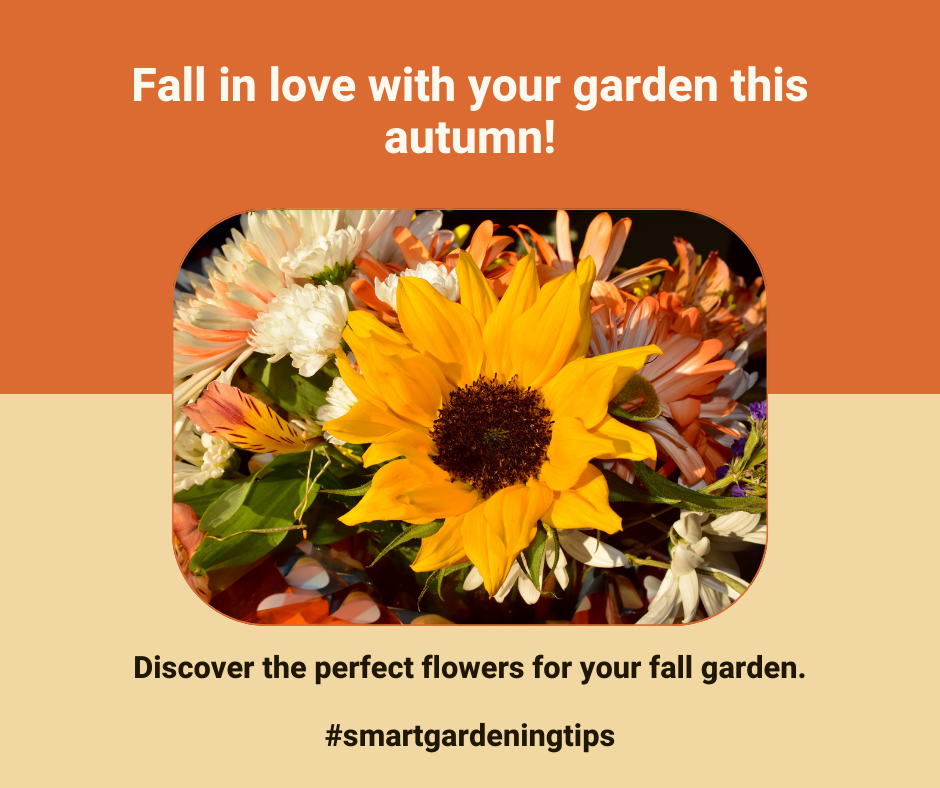
While many flowers may start to fade as autumn approaches, there are still plenty of options for bringing color and beauty to your fall garden. These flowers for fall gardening can withstand the cooler temperatures and provide vibrant blooms during the season.
- Chrysanthemums: Known for their stunning blooms, chrysanthemums are a popular choice for fall gardens. They come in a variety of colors and add a burst of color to any space.
- Pansies: Pansies are resilient flowers that can tolerate colder temperatures, making them an ideal choice for fall planting. They come in a wide range of colors and can even bloom through mild winter weather.
- Asters: Asters are hardy perennials that thrive in cooler weather. They produce daisy-like flowers in various shades of pink, purple, and white.
- Ornamental Cabbage and Kale: These unique plants feature vibrant, colorful leaves that resemble flowers. They add texture and visual interest to fall garden beds.
By incorporating these flowers for fall gardening, you can create a stunning and colorful garden that will brighten up the autumn season.
Now that you know which plants are best suited for fall gardening, you can start planning your autumn garden. Whether you choose to grow cold-tolerant vegetables or add a splash of color with fall flowers, your garden will thrive even as the temperatures cool down.
Transitioning summer plants to fall

As the summer season comes to a close, it’s time to start thinking about transitioning your summer plants to the fall. This important step in fall garden preparation ensures that your plants continue to thrive and stay healthy as the weather changes. Follow these best practices to make the transition smooth and promote plant health.
Assessing Plant Health
Before you begin transitioning your summer plants, it’s essential to assess their health. Look for any signs of diseases or pests that could affect the plant’s ability to thrive in the upcoming season. Remove any diseased or damaged parts of the plant to prevent the spread of infections. This will help ensure that your plants are prepared and ready for the fall season.
Pruning and Trimming
Pruning and trimming your summer plants is an essential step in preparing them for the fall. Remove any dead or dying leaves, stems, or flowers to promote new growth and prevent the plant from wasting energy on non-productive parts. Additionally, trimming back overgrown branches will help maintain a tidy and well-managed garden.
Adjusting Watering and Fertilization
Transitioning from summer to fall means adjusting your watering and fertilization routines. As the weather cools down, your plants may require less water. Monitor the soil moisture levels and adjust your watering schedule accordingly. Similarly, adjust your fertilization routine to provide the right nutrients for the changing season. Consider using a slow-release fertilizer to ensure a steady supply of nutrients for your plants.
Protecting Plants from Frost
Frost can pose a threat to plants as the temperatures drop in the fall. Take precautions to protect your plants from frost by covering them with frost blankets or moving them to a sheltered location. Mulching the soil around your plants can also help insulate the roots and provide additional protection.
Transplanting
If you have summer plants that aren’t suitable for the fall season, such as annuals or tender perennials, consider transplanting them to containers or indoor locations with adequate sunlight. This way, you can continue to enjoy their beauty and keep them protected during the colder months.
Summary
Transitioning summer plants to fall is an essential part of fall garden preparation. By assessing plant health, pruning and trimming, adjusting watering and fertilization, protecting from frost, and considering transplanting options, you can ensure a smooth transition and promote plant health. Follow these best practices to prepare your garden for the upcoming fall season.
Essential fall gardening tools and supplies
When it comes to fall gardening, having the right tools and supplies is essential to ensure a successful season. From soil preparation to planting, each step requires specific items that will help you achieve optimal results. Whether you’re a seasoned gardener or just starting out, having these essentials on hand will make your fall gardening journey a breeze.
Soil Preparation
Preparing your soil is the first step towards a healthy and productive fall garden. The following tools will help you get your soil ready for planting:
- Garden fork: This tool is perfect for loosening compacted soil and improving drainage.
- Spade: A spade is essential for turning the soil and incorporating organic matter.
- Garden rake: Use a rake to level the soil surface after tilling and remove any debris.
Planting
Once your soil is prepared, it’s time to start planting your fall crops. Here are some tools and supplies you’ll need:
- Hand trowel: Use a hand trowel for transplanting seedlings and planting bulbs.
- Garden gloves: Protect your hands from dirt, thorns, and potential irritants while working in the garden.
- Watering can or hose: Ensure your plants stay hydrated by having a reliable watering can or hose.
Additional Tools and Supplies

While soil preparation and planting are the main focus of fall gardening, there are a few additional tools and supplies that can make your gardening experience even better:
- Pruning shears: Keep your plants tidy and promote healthy growth by pruning dead branches and stems.
- Mulch: Apply a layer of mulch around your plants to conserve moisture, suppress weeds, and regulate soil temperature.
- Plant markers: Use plant markers to keep track of your different varieties and ensure you know what’s growing where.
Investing in these essential fall gardening tools and supplies will set you up for success and make your gardening tasks easier and more enjoyable. Now that you’re equipped with the right gear, you’re ready to embark on your fall gardening journey.
| Tool/Supply | Purpose |
|---|---|
| Garden fork | Loosening compacted soil and improving drainage |
| Spade | Turning the soil and incorporating organic matter |
| Garden rake | Leveling the soil surface and removing debris |
| Hand trowel | Transplanting seedlings and planting bulbs |
| Garden gloves | Protecting hands from dirt, thorns, and irritants |
| Watering can or hose | Ensuring plants stay hydrated |
| Pruning shears | Trimming dead branches and stems for healthy growth |
| Mulch | Conserving moisture, suppressing weeds, and regulating soil temperature |
| Plant markers | Keeping track of different plant varieties |
Mulch and protective coverings for colder nights

As colder nights approach, it’s essential to protect your garden and ensure its continued health and vitality. One of the most effective ways to achieve this is by using mulch and protective coverings. Not only do these techniques shield your plants from the harsh elements, but they also provide a range of additional benefits for your garden.
The Benefits of Mulch
Mulch acts as a protective layer over the soil, helping to regulate temperature and moisture levels. It also acts as a natural weed suppressant and helps to prevent erosion. By using mulch in your garden, you can create a more stable environment for your plants, allowing them to thrive even in colder nights.
Mulch comes in various forms, including organic options such as straw, wood chips, and shredded leaves. Choose a mulch that suits your needs and preferences, remembering that organic mulches also provide additional nutrients as they break down.
Protective Coverings for Added Protection
In addition to mulch, protective coverings are another valuable tool in preserving your garden’s health during colder nights. These coverings shield your plants from frost, harsh winds, and other detrimental weather conditions. They create a microclimate around your plants, trapping warmth and protecting them from potentially damaging elements.
You can use a range of protective coverings, such as frost blankets, row covers, and cloches. These materials not only provide insulation but also allow light and air to circulate, ensuring your plants still receive the necessary nutrients and airflow while being protected.
Using Mulch and Protective Coverings Together
Combining mulch and protective coverings is an effective strategy for safeguarding your garden during colder nights. Start by applying a layer of mulch around the base of your plants to insulate the soil and retain moisture. Then, carefully place the appropriate protective covering over your plants, ensuring they are properly secured and allow for growth.
Remember to remove the coverings during warmer daytime temperatures to prevent overheating. This combination of mulch and protective coverings creates a robust shield against the cold, maintaining a healthy environment for your plants throughout the night.
By implementing these techniques, you can protect your garden from the chilling effects of colder nights while ensuring its continued growth and resilience. Don’t underestimate the impact that mulch and protective coverings can have on your garden’s health and longevity.
Maintaining a healthy fall garden
In order to ensure a healthy and thriving fall garden, it is crucial to establish a solid maintenance routine. By following proper watering routines and implementing effective fertilizing practices, you can nurture your plants to their fullest potential. Let’s explore these key practices in more detail:
1. Watering Routines

Watering your fall garden correctly is essential for plant growth and overall health. Here are some guidelines to follow:
- Fall garden maintenance: Maintain a regular watering schedule to keep the soil consistently moist, but not overly saturated. Aim for about one inch of water per week for most plants.
- Pay attention to the weather: Adjust your watering routine based on the weather conditions. If there is rain, you may need to decrease your watering frequency, while dry spells may require more frequent watering.
- Water at the right time: Water your plants in the morning to allow sufficient time for the foliage to dry before nighttime. This helps prevent the growth of fungal diseases.
- Use a soaker hose or drip irrigation: These methods deliver water directly to the base of the plants, minimizing water waste and reducing the risk of fungal diseases.
2. Fertilizing

Fall is an important time to provide your garden with the necessary nutrients to support healthy plant growth. Consider the following fertilizing tips:
- Choose the right fertilizer: Select a slow-release, balanced fertilizer specifically formulated for fall gardens. Look for one with a higher phosphorus content to promote root development and overall plant strength.
- Timing is key: Apply fertilizer according to the package instructions, typically in early to mid-fall. This allows plants to absorb the nutrients before the colder winter months.
- Avoid over-fertilizing: Applying excessive amounts of fertilizer can harm your plants and contribute to nutrient runoff. Follow the recommended dosage to prevent nutrient imbalances.
- Consider organic options: If you prefer an organic approach, consider using compost, aged manure, or other natural fertilizers to enrich your soil and feed your plants.
By incorporating these best practices for fall garden maintenance, watering routines, and fertilizing, you can create an optimal environment for your plants to thrive. Remember to tailor these practices to the specific needs of your garden and adjust as necessary throughout the season.
Now, let’s take a look at some common fall garden pests and effective strategies for preventing and managing them.
- Source: [Fall gardening tips by Garden Enthusiast](https://www.gardenenthusiast.com/fall-gardening-tips/)
Preventing and managing common fall garden pests

As you enjoy the delights of fall gardening, it’s important to be aware of potential pest problems that may arise. Fall garden pests can wreak havoc on your plants and undo all your hard work. However, with effective pest management strategies, you can prevent and control pesky invaders, ensuring a healthy and thriving garden.
Prevention is Key
One of the best ways to deal with fall garden pests is to prevent them from infesting your garden in the first place. Here are some preventive measures you can take:
- Keep your garden clean and free of debris. Fallen leaves and plant residue can provide hiding places for pests.
- Remove weeds regularly to remove potential food sources for pests.
- Inspect new plants before adding them to your garden. Look for signs of pests or diseases.
- Use row covers or netting to protect vulnerable plants from pest damage.
Identify and Monitor Pests
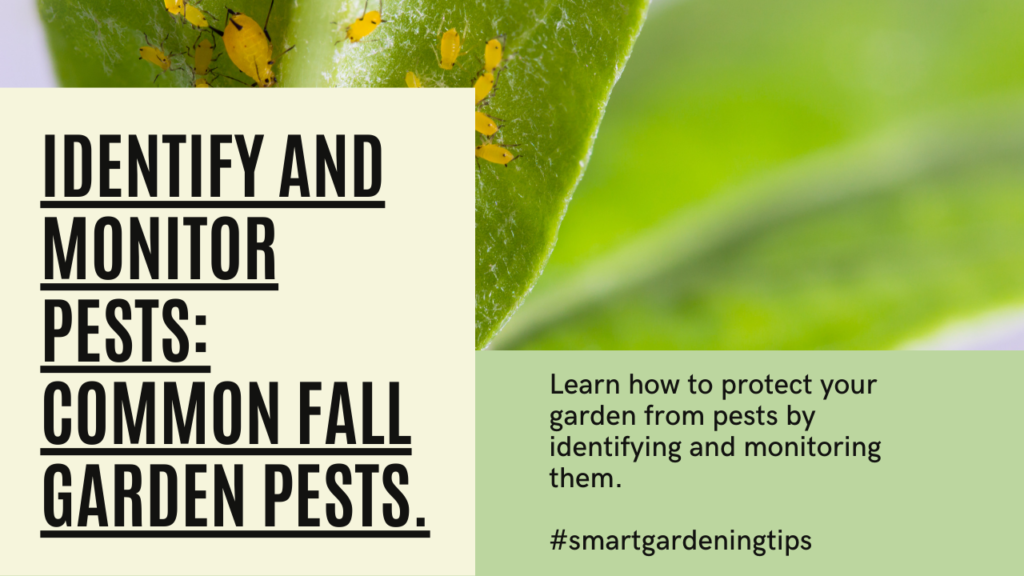
Being able to identify common fall garden pests is crucial for effective pest management. Regular monitoring helps you spot problems early on and take appropriate action. Observe your plants carefully and keep an eye out for signs of pest activity such as chewed leaves, yellowing foliage, or holes in fruits and vegetables.
Pest Control Methods
When it comes to managing fall garden pests, you have several options:
- Organic pest control: Use natural methods like handpicking pests, introducing beneficial insects, or making homemade pest sprays using ingredients like neem oil or garlic.
- Biological control: Release beneficial insects like ladybugs or lacewings that feed on pests.
- Insecticidal soaps and oils: These can be used to target specific pests while minimizing harm to beneficial insects.
Tips for Integrated Pest Management
Integrated Pest Management (IPM) is an effective approach to controlling pests while minimizing environmental impact. Here are some tips to follow:
- Encourage natural predators like birds and beneficial insects to your garden.
- Practice crop rotation and diversify your plantings to reduce pest populations.
- Water plants in the morning to avoid creating a damp environment that attracts pests.
- Remove and destroy infested plants to prevent the spread of pests.
Stay One Step Ahead
By taking proactive measures and staying vigilant, you can prevent and manage common fall garden pests effectively. Remember to regularly inspect your plants, intervene at the first signs of trouble, and maintain a healthy and pest-resistant garden. With these strategies in place, you’ll be able to enjoy the beauty and bounties of your fall garden without the worry of pests undermining your efforts.
| Pest | Description | Prevention | Control Methods |
|---|---|---|---|
| Aphids | Small, sap-sucking insects that reproduce rapidly | Regularly inspect plants, attract beneficial insects | Insecticidal soaps, neem oil |
| Slugs and Snails | Mollusks that feed on plant leaves and stems | Remove hiding places, use organic slug baits | Handpicking, copper barriers |
| Cabbage Worms | Green caterpillars that feed on cabbage family crops | Use row covers, encourage parasitic wasps | Bacillus thuringiensis (Bt), handpicking |
Fall garden harvesting and storage
As the season progresses and your fall garden starts to flourish, it’s important to know the proper techniques for harvesting and storing your bountiful produce. By optimizing your harvest and implementing effective storage methods, you can ensure that your hard work pays off throughout the season and beyond.
When it comes to fall garden harvesting, timing is key. Vegetables and fruits should be picked at their peak ripeness to maximize flavor and nutritional value. Regularly check your plants for signs of readiness, such as vibrant colors, firmness, and ease of separation from the plant. Be sure to handle delicate produce, like tomatoes, with care to avoid bruising.
Optimizing Harvest
Here are a few tips to help you optimize your fall garden harvest:
- Harvest in the early morning when the weather is cooler to preserve the flavor and texture of your fruits and vegetables.
- Use clean, sharp tools to minimize damage to the plants and produce.
- Avoid overharvesting to ensure a continuous supply throughout the season.
- Remove any diseased or damaged fruits and vegetables from the garden to prevent the spread of disease.
Once you’ve harvested your produce, it’s time to focus on proper storage techniques to extend their shelf life and maintain their quality.
Proper Storage Techniques

Here are some storage recommendations for commonly harvested fall garden produce:
| Produce | Storage Technique |
|---|---|
| Root Vegetables (carrots, beets, turnips) | Remove the tops, store in a cool, dark place (e.g., root cellar or refrigerator) with high humidity. |
| Winter Squash (butternut, acorn) | Cure in a warm, dry location for 10-14 days, then store in a cool, dry place. |
| Leafy Greens (kale, collard greens, spinach) | Store in the refrigerator in a plastic bag or airtight container to maintain freshness. |
| Apples | Store in a cool, dry place in a ventilated container or a refrigerator crisper drawer. |
Remember to check your stored produce regularly for signs of spoilage and discard any items that show signs of rot or decay. Proper storage and regular monitoring will help you enjoy your homegrown produce for longer periods.
Harvesting crops before frost
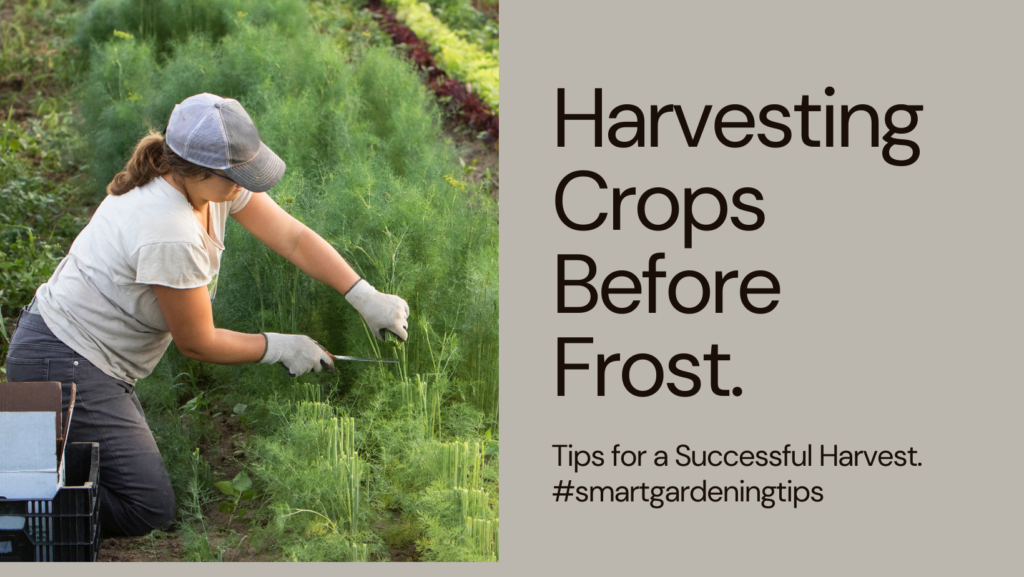
As the fall season progresses, it’s important to be mindful of the impending frost and the impact it can have on your crops. Frost can damage or even kill your plants, jeopardizing all the hard work you put into your fall garden. That’s why it’s crucial to harvest your crops before the frost sets in to ensure a successful harvest and protect your plants from potential harm.
To help you navigate this critical stage of fall gardening, here are some essential tips for frost protection and crop harvesting:
1. Keep a close eye on the weather forecast
Stay informed about frost warnings in your area by regularly checking the weather forecast. Frost can occur overnight when temperatures drop below freezing, so it’s crucial to monitor the temperature trends and plan your harvesting accordingly.
2. Know the frost tolerance of your crops
Understanding the frost tolerance of your crops is key to determining the right time for harvest. Some plants, like kale and cabbage, are more tolerant of cold temperatures and can withstand light frosts. Others, such as tomatoes and peppers, are more sensitive and should be harvested before the first frost.
3. Harvest when the conditions are right
Take advantage of sunny and dry days to harvest your crops. Moisture on the plants can increase the risk of frost damage, so it’s best to wait until the foliage is dry before picking your produce. Additionally, harvesting in the afternoon allows the crops to benefit from the warmth of the sun, further reducing the risk of frost damage.
4. Use protective coverings
If frost is imminent but you’re not ready to harvest all your crops, consider using protective coverings like tarps, row covers, or cloches. These can help create a barrier between your plants and the cold air, providing some degree of protection. Remember to secure the coverings properly to prevent them from blowing away in strong winds.
5. Prioritize the most vulnerable crops
If you have limited time or resources, prioritize harvesting the most vulnerable crops first. These are usually the ones that are less tolerant of cold temperatures or nearing full maturity. By focusing on these crops, you can minimize potential losses and ensure a successful harvest before the frost arrives.
6. Store harvested crops properly
Once you’ve harvested your crops, it’s essential to store them properly to maintain their freshness and quality. Remove any damaged or diseased produce and store the rest in cool, dry conditions. Consider using proper storage containers or bags that allow airflow to prevent moisture buildup and spoilage.
By following these frost protection and crop harvesting techniques, you can safeguard your fall garden and enjoy the bountiful harvest of your labor. Remember to plan ahead, stay vigilant, and make the most of your fall gardening experience!
FAQ
Q. What are the benefits of fall gardening?
A. Fall gardening offers increased plant growth and productivity. It also allows you to prepare your garden for a successful spring season. The cooler temperatures and moist soil create ideal conditions for many plants to thrive.
Q. How do I choose the right plants for fall gardening?
A. When selecting plants for fall gardening, focus on cold-tolerant vegetables and flowers. These include crops like kale, cabbage, broccoli, mums, pansies, and asters. These varieties can withstand cooler temperatures and continue to flourish in the fall.
Q. How do I transition my summer plants to fall?
A. To transition your summer plants to fall, start by pruning any damaged or overgrown foliage. Gradually reduce watering and fertilizer application to prepare the plants for dormancy. Consider replanting some summer flowers with cold-tolerant varieties and incorporating fall vegetables into your garden.
Q. What are the essential tools and supplies for fall gardening?
A. Essential tools for fall gardening include a garden fork or tiller for soil preparation, a rake for clearing debris, pruners for trimming plants, and a watering can or hose for irrigation. Additionally, you may need gardening gloves, a wheelbarrow for moving soil or mulch, and plant markers for labeling your crops.
Q. How can I protect my garden on colder nights?
A. To protect your garden from colder nights, apply mulch around the base of plants to insulate the soil. You can also cover delicate or frost-sensitive plants with protective coverings like frost blankets or row covers. These measures help retain heat and prevent frost damage.
Q. How do I maintain a healthy fall garden?
A. To maintain a healthy fall garden, establish a consistent watering routine that provides sufficient moisture without overwatering. Regularly fertilize plants with a balanced fertilizer to promote growth. Keep an eye out for common fall garden pests and address any issues promptly to ensure plant health.
Q. How can I prevent and manage common fall garden pests?
A. Preventing and managing common fall garden pests involves regularly inspecting plants for signs of infestation, practicing good garden hygiene by removing weeds and debris, and using organic pest control methods like neem oil or insecticidal soaps. Additionally, companion planting and attracting beneficial insects can help deter pests.
Q. How should I harvest and store my fall garden produce?
A. When harvesting fall garden produce, carefully pick fruits and vegetables at their peak ripeness. For storage, clean and dry the harvested produce, and pack them appropriately. Some crops, like root vegetables, can be stored in a cool, dark area, while others may require refrigeration.
Q. Why is it important to harvest crops before frost?
A. Harvesting crops before frost is crucial because freezing temperatures can damage or kill plants. Frost protection measures may help, but it’s best to collect the mature produce before the first frost of the season. This ensures you can enjoy your harvest while preserving the quality of the crops.
Conclusion
In conclusion, fall gardening offers a plethora of benefits for both your garden and your future harvest. By implementing the expert tips and techniques provided throughout this article, you can ensure the growth and productivity of your garden well into the spring season. From choosing the right plants and transitioning summer plants to proper maintenance and pest prevention, every step is crucial for a successful fall garden.
Don’t forget the importance of essential tools and supplies, such as mulch and protective coverings, to safeguard your plants from colder nights. With regular care and attention, you can maintain a healthy garden throughout the fall season, resulting in a bountiful harvest.
Lastly, make sure to harvest your crops before frost sets in and learn proper storage techniques to preserve your produce for longer. By following these practices, you’ll be able to reap the rewards of your fall garden and enjoy the delicious flavors of your hard work throughout the season.







